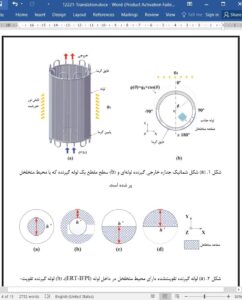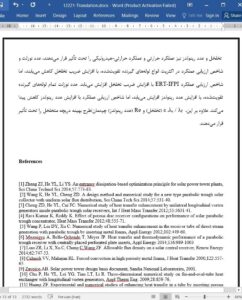Abstract
In this paper, the heat transfer enhancement for convection heat transfer of turbulent flow in a central receiver tube filled with porous medium under non-uniform circumferential heat flux was numerically investigated. The effects of some parameters of porous medium (layout, thermal conductivity and porosity) and the Reynolds number (Re) on the thermal and thermo-hydraulic performance were discussed. The results showed that the enhanced receiver tube (ERT) with down-filling porous inserts and in-filling porous inserts have good thermal performance when the ratio of thermal conductivity of porous medium to working fluid (λs/λf) is less than 1,000. The ERT with out-filling porous inserts and up-filling porous inserts have good thermo-hydraulic performance when λs/λf >100. The porosity (ɛ) and Re also affect the thermal and thermo-hydraulic performance, the Nusselt number (Nu) and performance evaluation criteria (PEC) of heat transfer enhancement under constant pumping power of most kinds of ERTs decrease with the increase of ɛ, but the PEC of the ERT with in-filling porous inserts increases with the increase of ɛ. The Nu of all kinds of ERTs increases with the increase of Re, but the PEC decreases with the increase of Re.
1. Introduction
Solar power tower system (SPTS) is a primal concentrating solar power, which has many obvious advantages including low average cost and large-scale power generation [1]. The receiver is the key component of the SPTS. There are two main kinds of receivers used to SPTS: volumetric receiver and tubular receiver. The tubular receiver can well bear pressure and high temperature, and is applicable to various heat transfer fluid (HTF), such as water/steam, liquid metal, and molten salt.
5. Conclusion
In this paper, a numerical investigation was carried to study the heat transfer enhancement in a central receiver tube partially or completely filled with porous medium. The effects of some parameters of porous medium (H, λs, ε) and the Re on the thermal and thermo-hydraulic performance were also discussed. The following conclusions can be made.











